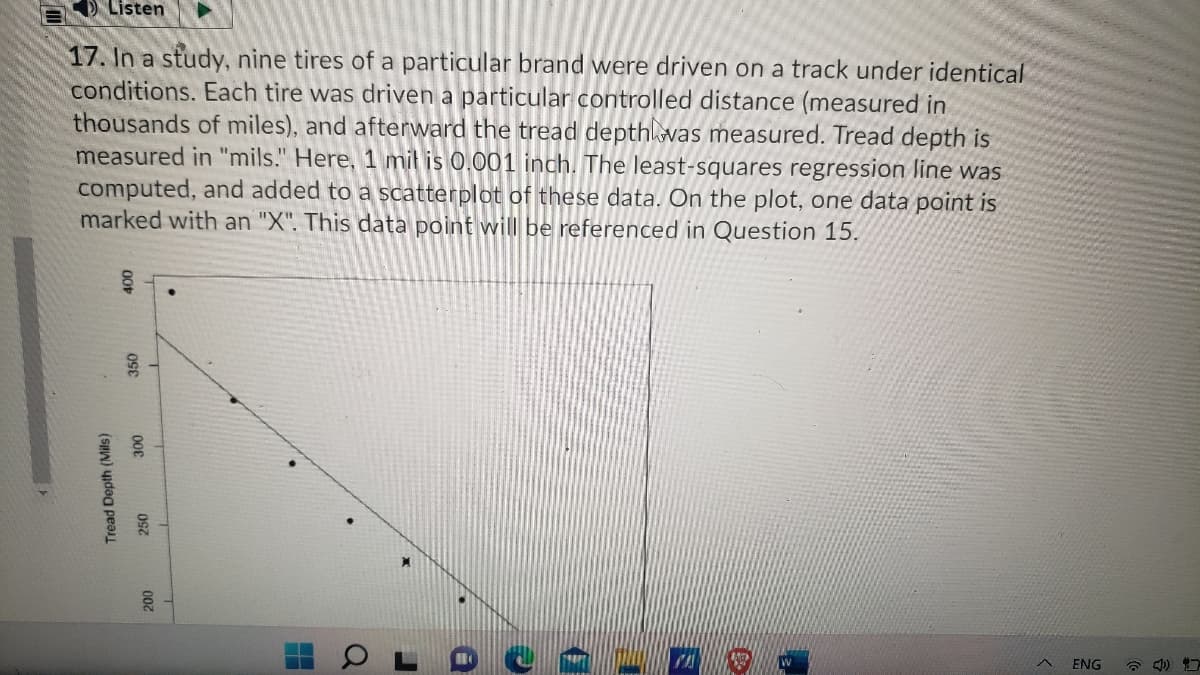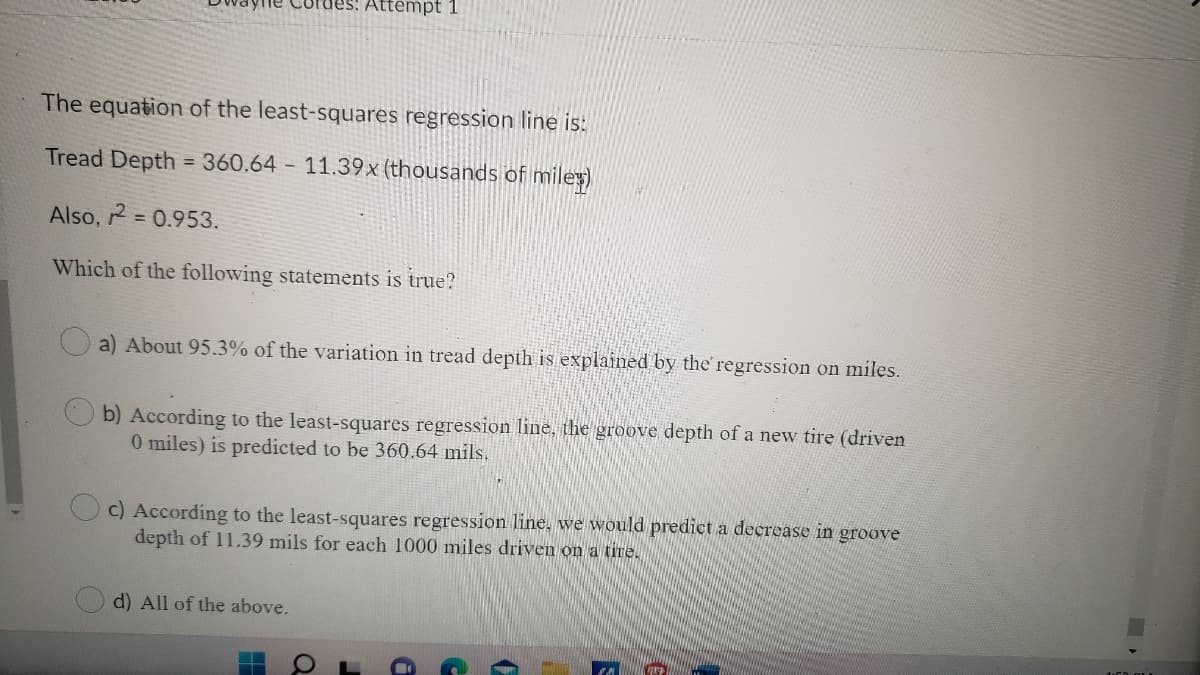ieh of the following statements is true? a) About 95.3% of the variation in tread depth is explained by the regression on miles. b) According to the least-squares regression line, the groove depth of a new tire (driven 0 miles) is predicted to be 360.64 mils. Oc) According to the least-squares regression line, we would predict a decrease in groove depth of 11.39 mils for each 1000 miles driven on a tire. d) All of the above.
ieh of the following statements is true? a) About 95.3% of the variation in tread depth is explained by the regression on miles. b) According to the least-squares regression line, the groove depth of a new tire (driven 0 miles) is predicted to be 360.64 mils. Oc) According to the least-squares regression line, we would predict a decrease in groove depth of 11.39 mils for each 1000 miles driven on a tire. d) All of the above.
Chapter3: Polynomial Functions
Section3.5: Mathematical Modeling And Variation
Problem 2ECP
Related questions
Question

Transcribed Image Text:Listen
17. In a study, nine tires of a particular brand were driven on a track under identical
conditions. Each tire was driven a particular controlled distance (measured in
thousands of miles), and afterward the tread depthlvas measured. Tread depth is
measured in "mils." Here, 1 mil is 0.001 inch. The least-squares regression line was
computed, and added to a scatterplot of these data. On the plot, one data point is
marked with an "X". This data point will be referenced in Question 15.
ENG
* 4)
Tread Depth (Mils)

Transcribed Image Text:Attempt 1
The equation of the least-squares regression line is:
Tread Depth = 360.64 - 11.39x (thousands of miley)
Also, 2
= 0.953.
Which of the following statements is true?
a) About 95.3% of the variation in tread depth is explained by the regression on miles.
O b) According to the least-squares regression line, the groove depth of a new tire (driven
0 miles) is predicted to be 360.64 mils.
c) According to the least-squares regression line, we would predict a decrease in groove
depth of 11.39 mils for each 1000 miles driven on a tire.
d) All of the above.
Expert Solution
This question has been solved!
Explore an expertly crafted, step-by-step solution for a thorough understanding of key concepts.
This is a popular solution!
Trending now
This is a popular solution!
Step by step
Solved in 2 steps with 2 images

Recommended textbooks for you


Glencoe Algebra 1, Student Edition, 9780079039897…
Algebra
ISBN:
9780079039897
Author:
Carter
Publisher:
McGraw Hill

Linear Algebra: A Modern Introduction
Algebra
ISBN:
9781285463247
Author:
David Poole
Publisher:
Cengage Learning


Glencoe Algebra 1, Student Edition, 9780079039897…
Algebra
ISBN:
9780079039897
Author:
Carter
Publisher:
McGraw Hill

Linear Algebra: A Modern Introduction
Algebra
ISBN:
9781285463247
Author:
David Poole
Publisher:
Cengage Learning

Algebra & Trigonometry with Analytic Geometry
Algebra
ISBN:
9781133382119
Author:
Swokowski
Publisher:
Cengage

Holt Mcdougal Larson Pre-algebra: Student Edition…
Algebra
ISBN:
9780547587776
Author:
HOLT MCDOUGAL
Publisher:
HOLT MCDOUGAL